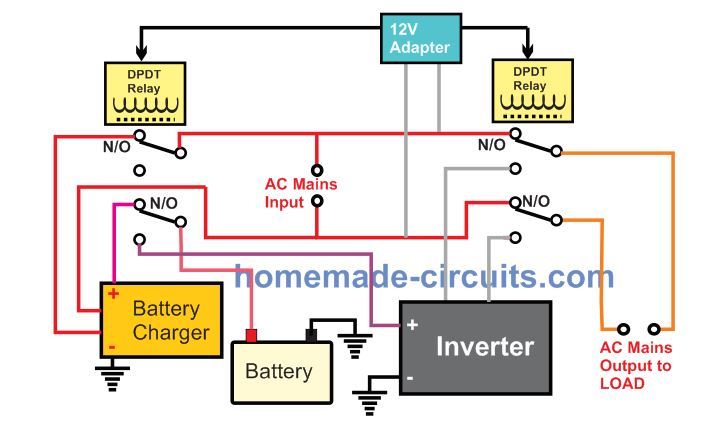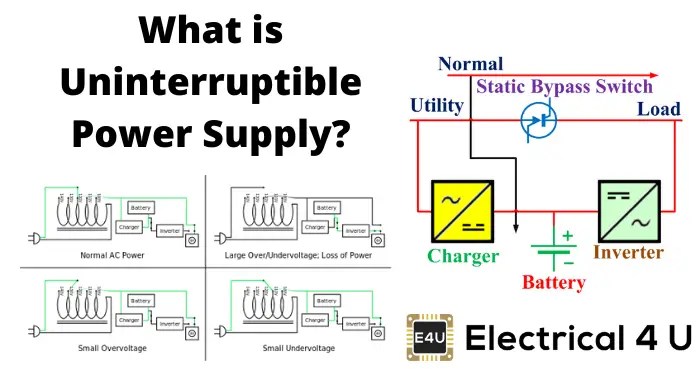Home wiring diagrams are a crucial component to any home electrical project. Whether you're installing a new device, adding a switch, or troubleshooting an existing issue, having a comprehensive understanding of your home's wiring is essential. To make this easier, many homes have a pre-installed wiring diagram for the primary power source, often referred to as a “UPS” or Uninterrupted Power Supply.
A UPS is a power supply system that supplies emergency backup power in the event of a power outage. It works by automatically switching to a secondary source of power when your standard source of power fails. This ensures that your home’s systems stay up and running in the event of a power outage. While not everyone needs a UPS, it can be a great way to protect important electronic devices and appliances from power failure.
If you’re looking to install a UPS in your home, you’ll need to understand the basics of home wiring diagrams. A wiring diagram is a visual representation of how all the components of your system connect to one another. It will show you which wires go where and what they do. This makes it easier to identify any problems or potential issues before they arise. Wiring diagrams are also a great tool for troubleshooting existing systems.
Now let’s dive in and learn more about home wiring diagrams for UPS systems. First, we’ll discuss the different types of wiring diagrams and what you can expect to find in each one. We’ll then cover the steps for creating a wiring diagram for your own home. Finally, we’ll go over some common mistakes to avoid when working with wiring diagrams.
There are two main types of wiring diagrams you’ll encounter when dealing with a UPS system: Standard Wiring Diagrams and Electrical Schematics. Standard Wiring Diagrams are simple diagrams that show the connections between each component in the system. They show the source of power, how it’s delivered to each component, and how each component is connected to the rest of the system. They’re typically easy to read and understand, making them great for troubleshooting.
Electrical Schematics, on the other hand, provide an in-depth look at how the system works. They include detailed information on how the components are connected, the measurements of the components, and the voltages used. While these schematics can take some time to decipher, they’re invaluable for anyone looking to really get into the nitty-gritty of their home wiring.
Now that we’ve covered the different types of diagrams, let’s look at how to create one for a UPS system. The first step is to create a list of all the components in your system and their functions. This list should include the power source, the UPS itself, any surge protectors, and any other components that may be included in your system. Once you have this list, you can start creating your diagram.
The best way to create a wiring diagram is to use software designed specifically for this purpose. Most software programs are fairly easy to use, and can help you draw out the entire system. Just add the components, connect them with lines, and label each piece so you can easily identify it. This type of diagram is especially helpful if you’re troubleshooting an existing system.
Creating a wiring diagram for a UPS system doesn’t have to be difficult. By following the steps outlined above and using the right tools, you can quickly and easily create a comprehensive diagram for your home. When finished, you’ll have a detailed schematic that can help you troubleshoot any issues you may have with your system.
Finally, let’s go over some common mistakes to avoid when creating home wiring diagrams for a UPS system. First, make sure that you’re double-checking your measurements and components to ensure accuracy. Also, make sure you’re labeling all the components properly. Finally, don’t try to rush through the process; having a thorough understanding of your system is key to troubleshooting any issues that may arise.
Home wiring diagrams for UPS systems can be a great way to understand the electrical setup in your home and help troubleshoot any issues you may have. With the right tools and knowledge, creating a wiring diagram for your own home isn’t difficult. Just remember to double-check your measurements, label all the components accurately, and take your time when creating the diagram. By following these simple steps, you’ll be able to create a comprehensive diagram that will help you keep your home’s systems running smoothly.

Power Supply Unit Ups Wiring Diagram Converters Block Png 1320x539px Area

Ups Uninterruptible Power Supply Circuit Diagram

The Unknown Danger Of Ups Batteries Ec M

How A Ups System Works With Backup Generator Cyberpower Power Blog

Toyota Pick Ups Land Cruiser 4runner 1989 1996 Wiring Diagrams Repair Guide Autozone
Automatic Ups System Wiring Circuit Theory Engineering Facebook

Intro To Electrical Diagrams Technology Transfer Services
.jpg?strip=all)
Ups Installation Requirements

How To Design An Uninterruptible Power Supply Ups Circuit Homemade Projects
Correct Wiring Diagram For 1 Story House Diy Home Improvement Forum

Uninterruptible Power Supply Ups Block Diagram Explanation Electrical4u

What Does A Bypass Switch In Ups System Do
Electrical Energy World Automatic Ups System Wiring Diagram Facebook

China Allsparkpower 110v 6kw 7kwh Ups For House Home Products Solar Power Supply

Power Inverter Installation Magnum Dimensions

4 Simple Uninterruptible Power Supply Ups Circuits Explored Homemade Circuit Projects

The Facts About Modern Rotary And Static Uninterruptible Power Systems Ups Eep

Part Three Alternative Power And Ups System Vervainglobal Com


